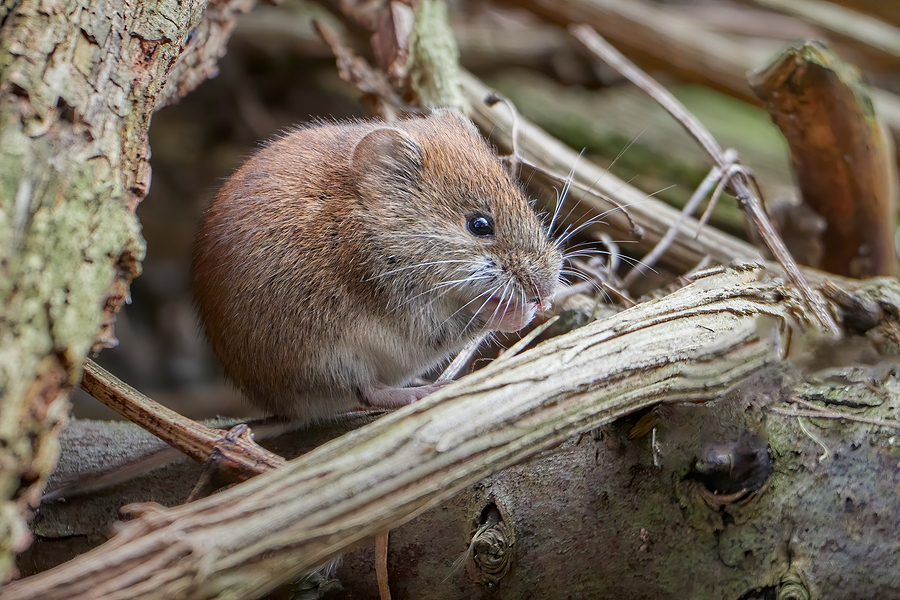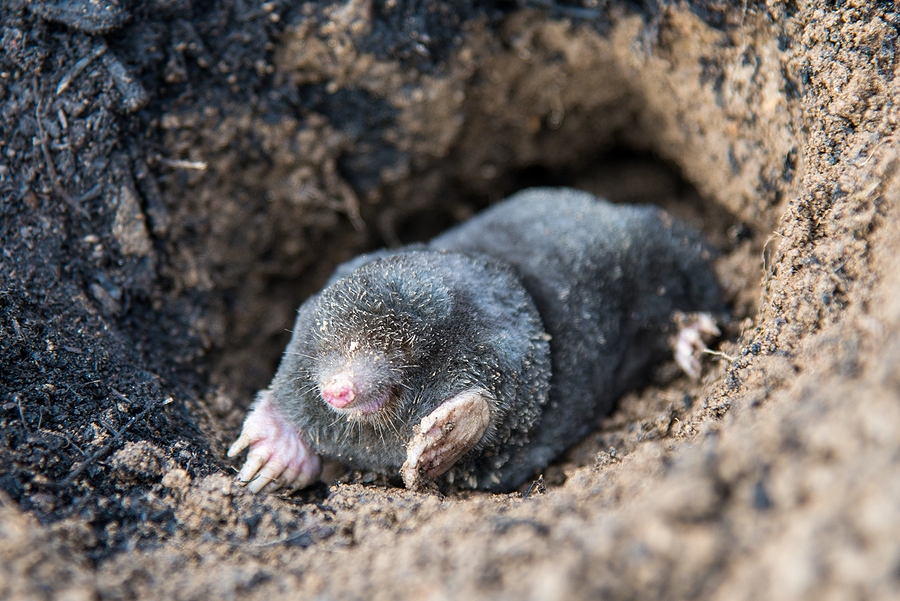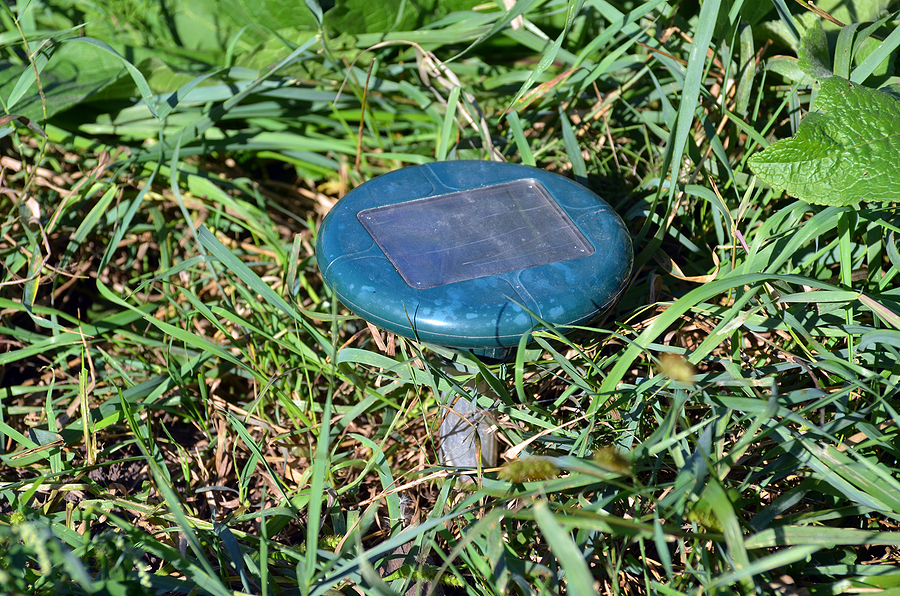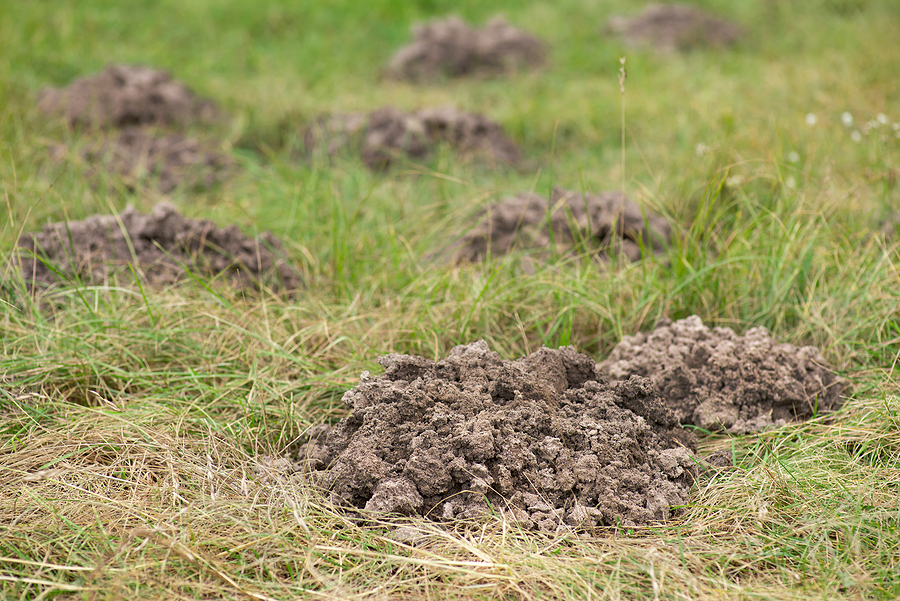Every gardener’s nightmare is to wake up and find their manicured lawn transformed overnight into a network of raised earth ridges, or their tender plants viciously chewed down to the roots. These could be telltale signs of yard moles or voles causing havoc in your beloved garden. But how can you tell whether it’s a mole or a vole?
This blog aims to shed light on the differences between these two little garden invaders, from their physical attributes, their habits, to their preferred meals. We’ll also offer insights into effective wildlife control measures to help you safeguard your yard. Understanding these creatures is the first step in reclaiming your garden. Let’s delve in!


Moles Versus Voles
Moles and voles are two different species of animal. They are not the same animal, even though their names rhyme. Here is a detailed explanation of both a yard mole and a garden vole:
What is a Yard Mole?
Moles are small, furry animals that have adapted to living underground. They are often found in gardens and lawns, where they create elaborate tunnel systems using their powerful paws. These tunnels can be up to 18 inches deep, and moles use them to hunt for their preferred prey of earthworms. Moles are not rodents like voles; instead, they belong to the order Insectivora, and they are more closely related to shrews.
What is a Vole?
Voles, on the other hand, may resemble small mice because they are in fact rodents. They are also known as meadow mice, field mice, or pine voles. Voles have a shorter tail compared to their rodent relatives and are typically found in fields, gardens, meadows, or orchards. Unlike moles, voles do not burrow underground; instead, they create shallow tunnels just under the surface of the soil.
Additional Differences Between a Vole and a Mole
Physical Attributes
At first glance, one might mistake a mole for a vole and vice versa. But upon closer examination, their physical differences become apparent. Moles are insectivorous mammals that have cylindrical bodies with velvety fur, small eyes, and no visible ears. Their large front paws have long claws that help them dig extensive networks of underground tunnels. In contrast, voles are small rodents with rounded bodies covered in short fur and small eyes and ears. Their front paws have shorter claws compared to moles, adapted for digging shallow burrows near the surface.
The Habitat and Habits
Moles prefer moist, loamy soil found in fields, meadows, pastures, or gardens. They primarily feed on earthworms, grubs, and other insects found in the soil. These solitary creatures are most active during early mornings or evenings and spend most of their time underground. On the other hand, voles are herbivores that prefer grassy areas with dense vegetation for cover. They create shallow tunnels near the surface to access food sources such as roots, bulbs, and tubers from plants. Unlike moles, voles are social creatures that live in large colonies.
The Litter Size
Moles and voles also differ in terms of their reproduction rates. While moles typically have one litter of 2-7 pups per year, voles can produce up to 13 litters annually, with each litter consisting of 3-6 pups. This high reproductive rate is one of the reasons why voles can cause much more damage to your garden in a shorter amount of time compared to moles.
Wildlife Control Measures
Effective wildlife control measures involve identifying and understanding the intruders’ habits, behavior, and preferred habitats. For instance, since moles are solitary creatures that dig deep tunnels, trapping or using repellents may be more effective in getting rid of them. On the other hand, voles live in colonies and are more susceptible to exclusion methods such as fencing or planting barriers around your garden. Additionally, keeping your lawn tidy by removing piles of debris can discourage these creatures from taking up residence in your yard.
Final Thoughts
In conclusion, understanding the physical differences, habitats, habits, and reproductive rates of moles and voles can help you identify the culprit behind your garden destruction. It is also crucial to choose appropriate wildlife control measures based on the type of invader in your yard. With this knowledge in hand, you can protect your beloved garden from these pesky invaders and enjoy a beautiful and healthy outdoor space all year round.
Would you like some professional critter control help with nuisance yard moles? Contact Mole Miners at 629-277-0933 for TWRA licensed and insured mole trapping and removal services in Nashville, Tennessee and beyond. We serve both residential and commercial customers.
Related Posts:
The Best Plants and Repellents to Keep Moles Away From Your Garden
Fascinating Facts about Animal Moles You Never Knew
Tunnel Trouble: The Impact of Ground Mole Activity on Your Yard


